Sennori is a village of the historic region of Romangia, a territory in the North of Sardinia, ten kilometres from Sassari, offering a beautiful panorama of the Gulf of Asinara.
It is located in an area famous for producing oil and wine, Sennori also boasting an exciting handicraft tradition, especially for the creation of some of the most precious traditional dresses in Sardinia, ancient historical testimonies and noteworthy cultural events.
Enjoy this detailed guide on what to see and do in Sennori and get ready for a fantastic journey discovering this jewel of North Sardinia!

Sardinia is something else: wider, much more usual, not at all irregular, but fading away in the distance. Ridges of hills like heathland, unremarkable, fading away, perhaps, towards a small group of peaks... Enchanting space around and distance to travel, nothing finished, nothing definitive. It is like freedom itself.
Sennori and Romangia, land of hills, olive groves and wines in North Sardinia
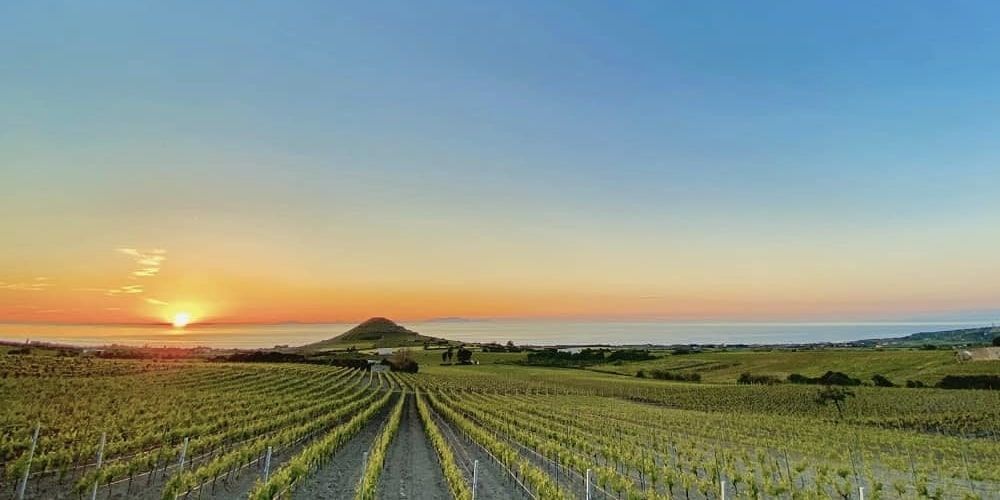
A Mistral breeze blows through the branches of the Romangia olive trees and creeps between the rows of vines. Sennori, unfolding on the top of the hill, dominates the landscape as if it wanted to admire it. By day a view as far as the eye can see over the countryside, the nearby village of Sorso and the Gulf of Asinara, by night a harmony of bright lights that create a completely different spectacle.
This is Romangia, with its appearance of sinuous limestone relief, a land of vineyards mixed with olive groves that descend to the sea. Here one of the oldest terroirs in Italy gives life to precious wines that derive from a tradition thousands of years old. In these wines with a strong flavour, one perceives the essence of grapes born from the sand, the beating sun, and the saltiness carried by the wind.
Sennori is right here, in the north-western Sardinia, halfway between Castelsardo and Porto Torres and 40 kilometres from the famous Stintino. Behind it are the rocky peaks of Osilo and before your eyes the immense blue of the sea. Do you wanna know everything about this wonderful land? Check out our super guide to North Sardinia.
Our lives are intertwined like the wicker of a basket, like the olive tree and the graft, like two stories told by the same voice.
The wicker baskets of Sennori, Sardinia: the craft tradition of weaving
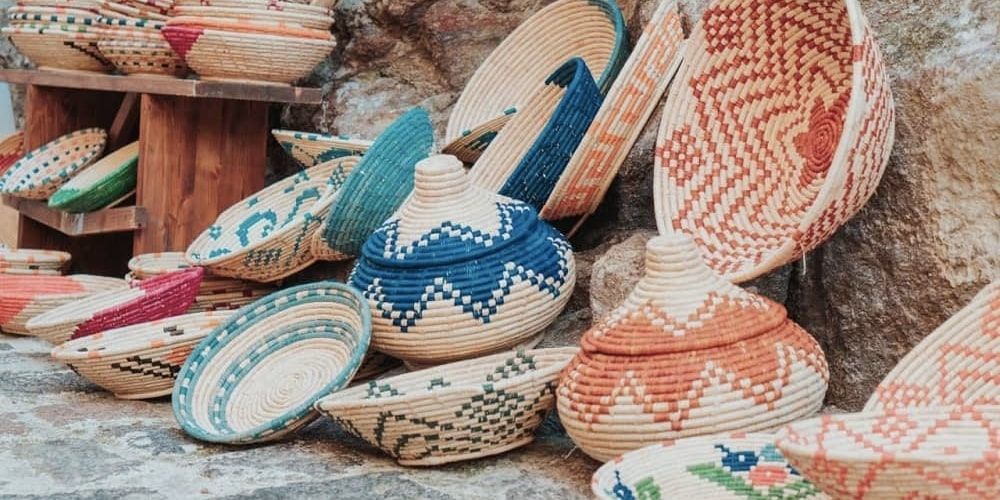
A piece of its history, of its soul, is enclosed within the craftsmanship of a people. In the weaves and designs of the wicker baskets typical of many towns on the island, one can read a piece of the Sardinian soul.
These ancient and precious skills have been handed down like treasures from generation to generation since prehistoric times. The skilled hands of the craftsmen create wonderful ones with different shapes according to their function, mixing coloured inserts, designs and traditional motifs.
In Sennori the art of weaving is very important and here the raw material par excellence is asphodel; this technique has come down to us thanks to the women who, sitting on the doorstep in many Sardinian villages, created these little masterpieces, today the icon of a whole local culture and identity.
What is strange is that a village made of rock, instead of giving us a sense of reality, seems to be made of the impalpable fabric of the imagination.
The traditional dress of Sennori: among the most beautiful in Sardinia
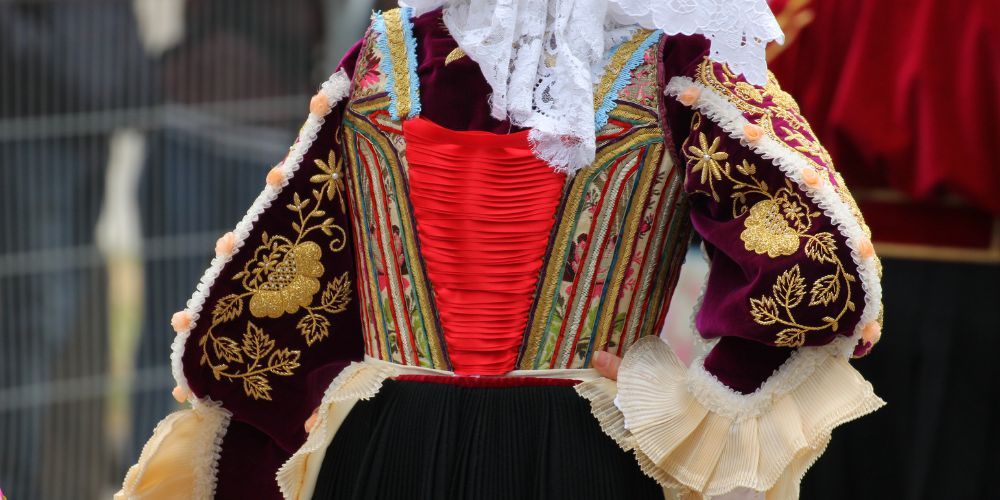
Let's continue with another story of craftsmanship and weaving, but this time the protagonists are gold and fabrics, the main ingredients to create the traditional dress of Sennori (in the picture, original photo by Gianni Careddu), one of the most colourful and original Sardinian costumes.
It boasts no less than four women's variations, among the most precious on the island, and maintains many of the details of its classic style unchanged. The ceremonial dress has a unique headdress, an embroidered bodice and an apron; it also has a set of gold jewellery including shirt buttons, a brooch and a necklace with a cross or medallion. The week dress is less rich, especially in the details of the skirt, while the widow's dress retains the same line as the gala dress, with colours tending towards black and purple.
The men's dress is also quite rich, while maintaining the classic cut of many other Sardinian costumes.
Wearing one of these costumes is like stepping back in time, how to feel the full force of the past sewn into you. Many traditional festivals are an excellent opportunity to see women, men and children proudly parading through the streets in the traditional dresses of their country.
If you don't want to miss out any of these beautiful occasions keep an eye on the Salude & Trigu programme, a container of the most fascinating events in North Sardinia.
In Sardinia, among people who have remained secluded and almost isolated from the rest of the world, a primitive faculty of mixing reality with legend and dream continues, more so than in other regions.
Sennori and the signs of an ancient civilisation in Sardinia
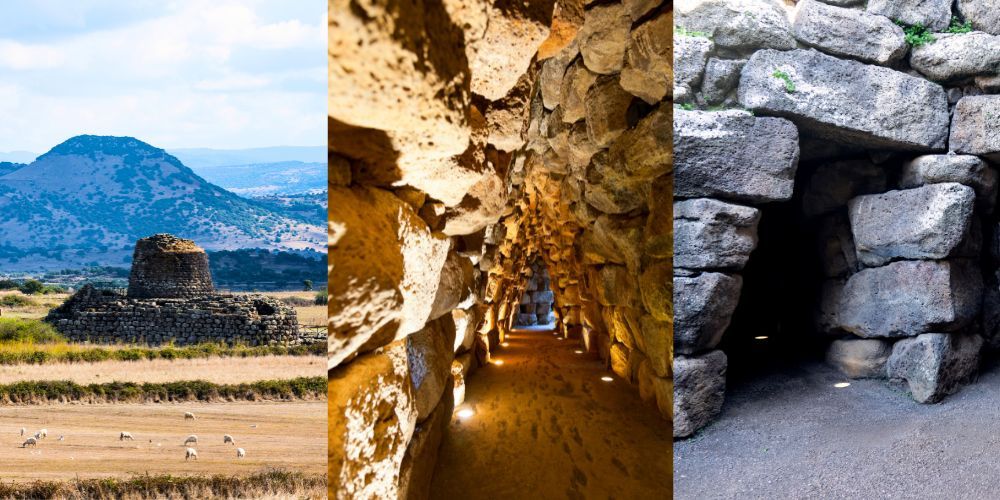
Sardinia is the land of fairies and giants. In the silence of valleys and hills, the signs of a millenary culture are scattered all over the island, a beauty that it's possible to find out exploring the Sardinian hinterland. We are talking about the Nuraghi, the Tombe dei Giganti (Tombs of the giants) and the Domus de Janas (fairy houses), the impressive archaeological marvels of Sardinia.
The first are prehistoric truncated cone-shaped buildings made of large stone boulders; they are among the tallest constructions in the Mediterranean basin after the Egyptian pyramids. The Nuragic civilisation inhabited the island from 1800 B.C. to the 3rd century B.C. and there are various theories about the function of the Nuraghi. It seems that some had a residential purpose, others military, others religious, but what is certain, in any case, is that they only exist here.
The Tombs of the Giants are collective tombs from the same era, so called because it is said that huge bones were found inside them. Their plan is reminiscent of the snout of a bull and the outer facade consists of large stones driven into the ground in a semicircle.
Much older, the Domus de Janas are tombs dug into the rock, where the people who inhabited the island 5000 years ago buried their dead to return to the Mother Goddess. The name derives from the popular legends according to which these were the homes of small fairies.
In Sardinia there are about 7000 Nuraghi (but it is estimated that there are more than 10,000) and 3500 Domus de Janas, some of them in the territory of Sennori. Here we find the site of Su Nuraghe, the Nuraghi of Badde Margherita, Badde Puttu, San Biagio and the Tomb of the Giants of Oridda. The Domus de Janas of the Beneficio Parrocchiale are excavated in a limestone ridge and decorated in relief. They constitute one of the most interesting testimonies of Sardinian prehistory. Also important is the necropolis of Serra Crabiles, which includes several fairy houses.
This is not the case in Sardinia, where every apparently conquered space hides a beyond that is never immediately grasped, preserving the mysterious virginity of things only touched.
Festivals and events near Sennori: experience the magic of Sardinia
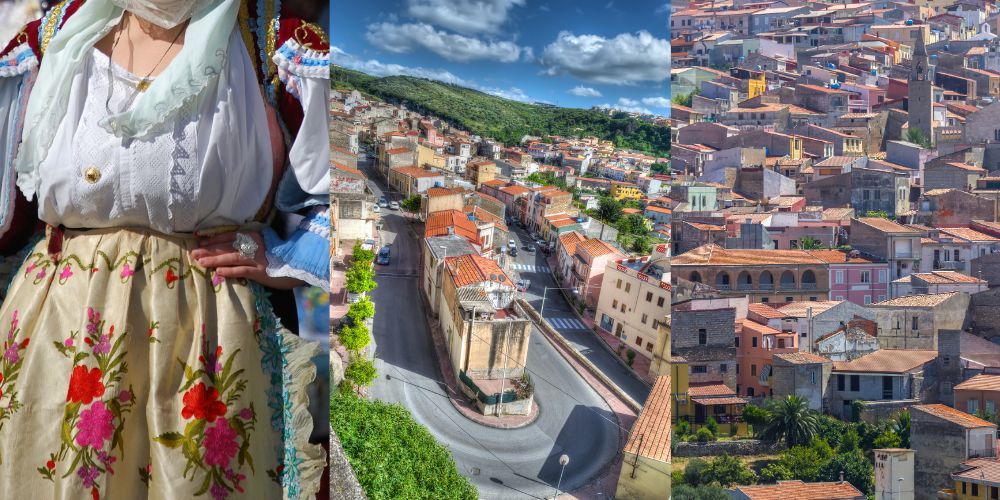
If traveling to North Sardinia you could find yourself wondering what to see and do in Sennori, you would surely find answer in all those traditions and events that mostly have the power, more than anything else, to bring us closer to the soul of this magical island full of wonders.
A magic, the Sardinian one, to be fully discovered thanks to Salude & Trigu, a fantastic project by Sassari Chamber of Commerce to promote the best events in Northern Sardinia to let people( both local citizens and tourists, to experience the culture of this territory and its hinterland authentically and unforgettably. Obviously, there are unmissable events related to music, history, flavours and nature in the beautiful area near Sennori, the best occasions to visit this beautiful village.
Two of the most outstanding events are Cavart, the festival of arts and environmental culture (June/July) held in the splendid and evocative landscape setting of the former quarries and the views of Asinara, and the electrifying wine festival A Chent'annos (October and December) dedicated especially to Moscato di Romangia DOC, an excellence of Sardinian wines extremely appreciated by experts.
Between colours and beliefs, legends and silent landscapes, one perceives that this land has so much to tell. It is beautiful to look up to the sky and see the stars shining brightly because artificial lights have not contaminated the darkness of the night. It is nice to listen to old stories told by the elders and realise how true they are to them. But most of all, it is nice to feel that, as we observe the wonder around us, there is always something we miss. This is the magic of Sennori, this is the magic of Sardinia. not simply a land to visit but an authentic experience to enjoy that will surely capture you deeply.
About the author
Written on 15/06/2024



Chiara Musino
Find out what to see and do in Sennori, a beautiful village on the Asinara Gulf that will enchant you with breathtaking views and precious traditions.